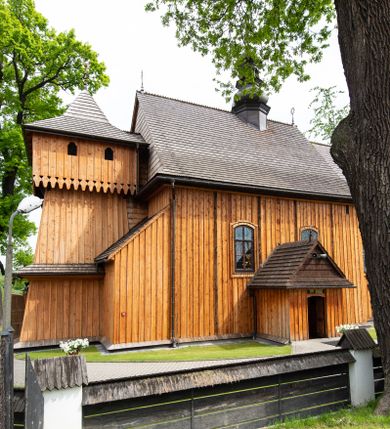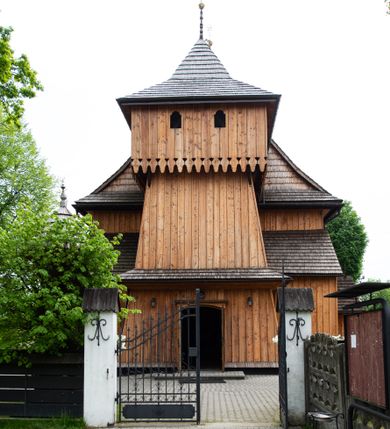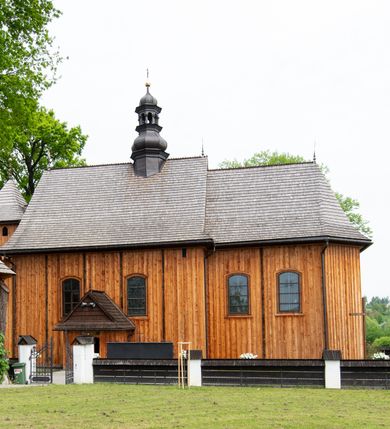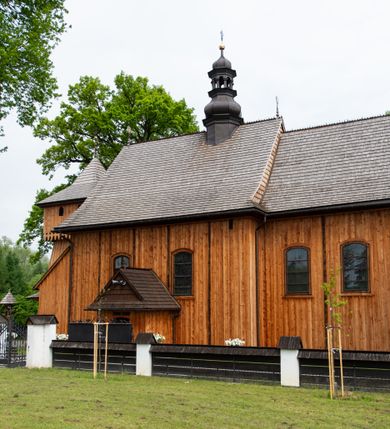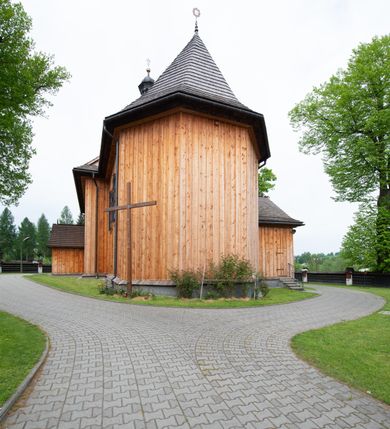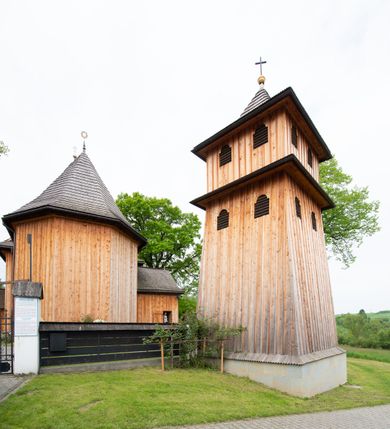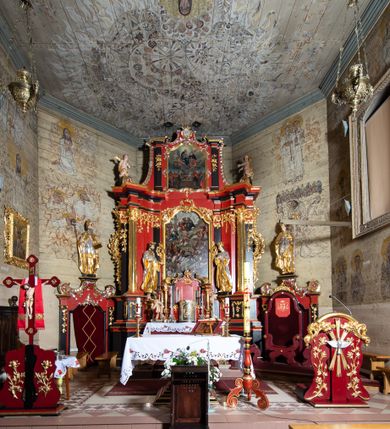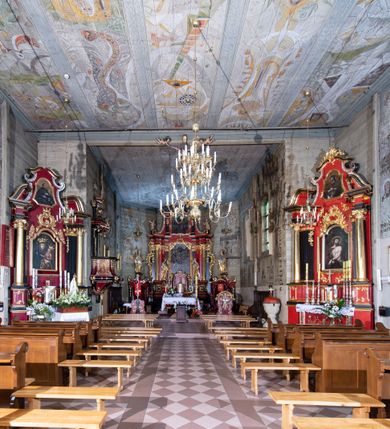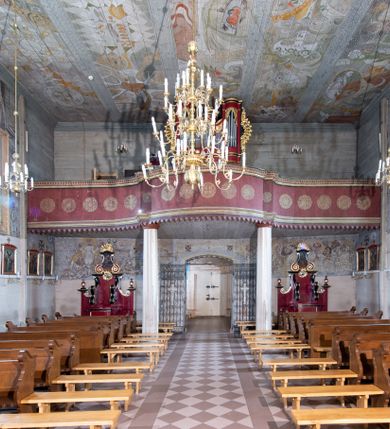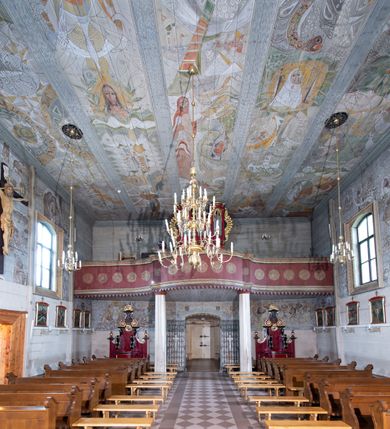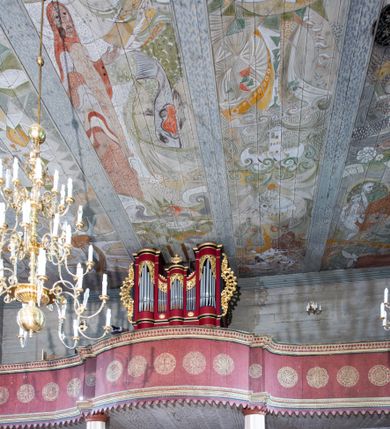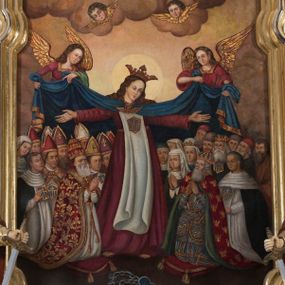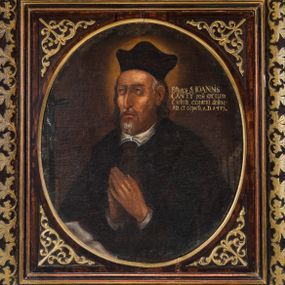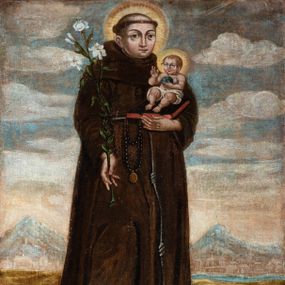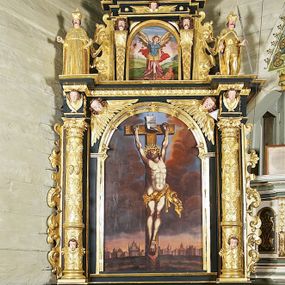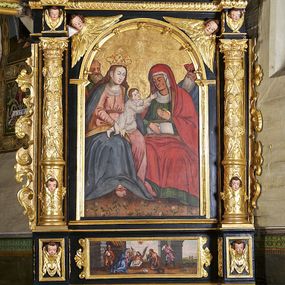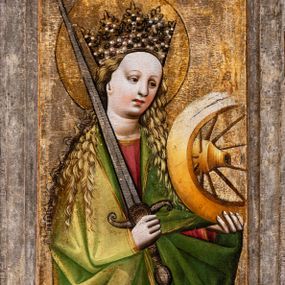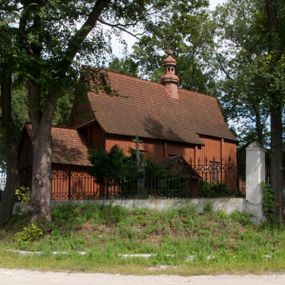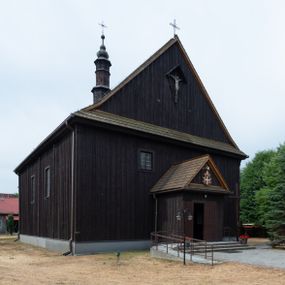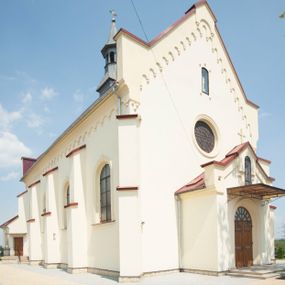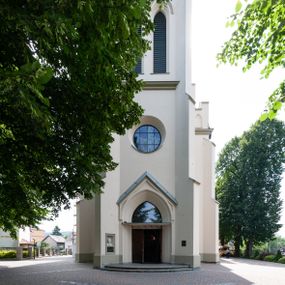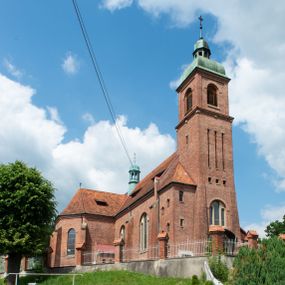
The church of All Saints in Zakliczyn
Place
Zakliczyn
Parish
All Saints parish in Zakliczyn
History of work
The first church in Zakliczyn was probably a temple from before 1325, demolished in 1566. A new church was not built until 1593. According to the records of visitation from 1730 and 1747, the following five altars were located there: altars of: All Saints, Our Lady of the Rosary, Man of Sorrows, Crucifixion and St. Anthony. In the years 1774-1775 another church was built at the expense of the then parish priest Wojciech Brandysiewicz and parishioners. The construction was managed by Antoni Wacławik. On 22 October 1776, an auxiliary bishop, Franciszek Potkański, consecrated the new temple, together with three new altars: of All Saints, of Saint Anthony and of Our Lady of the Rosary. The temple was added to the old bell tower - low, with sloping walls and a suspended sterling, covered with a hip roof with a ridge turret. It is assumed that Father Wojciech Brandysiewicz dedicated a part of the silver votives to the construction of the church, which were not recorded in the inventory of the church from 1789. In the altars, mostly old paintings from the previous temple were placed. On 26 August 1850, the renovated painting of Virgin Mary of Zakliczyn was unveiled. In the same year, Jakub Gubała created a stone stoup. The parishioners, persuaded by the parish priest Jędrzej Kowalczyk, created a new Garden of Gethsemane which included a painting depicting Christ in the Tomb Christ in the Tomb, created by Sebastian Stolarski. In 1853 a new organ was added which was made by Franz Rieger from Jägerndorf. One year later, the renovation of the church commenced, during which the temple and bell tower were shingled. At the same time, the bell tower was restored. The northern wall of the church became more and more bent over time, so in 1857 it was fortified with wooden pliers. Also in 1862 renovation works were resumed. During this time, two paintings were created: St. Isidore and St. Florian, perhaps painted by Sebastian Stolarczyk. Nevertheless, over the next forty years, the condition of the temple had to deteriorate significantly, as at the beginning of the 20th century, there were rumours about the construction of a new church. Funds have also been started to be raised for this purpose interrupted by by World War I for a several years. However, in 1924 it turned out that the sums accumulated in the Polish crowns and marks lost their value as a result of hyperinflation. Moreover, in May 1922 a hurricane wind destroyed the church tower, and its repair costed 200,000 Polish marks - money that was collected by the parishioners with such an effort. The plan to build a new temple came to nothing. Therefore, renovation of the old temple was commenced. The church was covered with new shingle, one part in 1925 and the other in 1930. In 1928, two bells were purchased to replace the old ones, which were confiscated during World War I. One bell was funded by Józef and Aleksander Czacki, the then owners of Zakliczyn, as well as the collators of the church. The other one was founded by parishioners, both local and those who stayed in America. Nevertheless, also these bells were confiscated, this time during World War II. There were only three left in the church: the bell from 1761 and little bell from 1659 stored in a parsonage (new bells were funded not until 1996). After the war, the church was successively renovated and its equipment restorated. In 1958 its electrification was completed. The polychrome of the church was made by the painter Józef Furdyna in 1969. In 1967, two extensions were added on both sides of the tower. In 2000, i.e. on the 225th anniversary of the church's construction, the funder, father Wojciech Brandysiewicz, was commemorated with a plaque. The fence of the church was made in 2001 when Stanisław Pająk was the parish priest. There are reliefs placed on the fence posts depicting scenes from the mysteries of the Rosary made by Marek Kluska from Tokarnia and founded by Marian Musielak and Marek Komperda from Zakliczyn. In 2010, the church was covered with new shingle and a general renovation of the tower took place, during which it was raised and the roof form was changed in order to match the whole temple. In 2012, a new bell tower was built next to the church, to which bells weighing down the structure of the old tower at the church were moved.
Abstract
The church of All Saints in Zakliczyn was built in 1774-1775 at the expense of then parish priest Wojciech Brandysiewicz and parishioners. On 22 October 1776, an auxiliary bishop, Franciszek Potkański, consecrated the new temple, together with three new altars: of All Saints, of Saint Anthony and of Our Lady of the Rosary. The temple was added to the old bell tower - low, with sloping walls and a suspended sterling, covered with a hip roof with a ridge. In the altars, mostly old paintings from the previous temple were placed. In 2000, i.e. on the 225th anniversary of the church's construction, the funder, father Wojciech Brandysiewicz, was commemorated with a plaque. In 2012, a new bell tower was built next to the church, to which bells relieving the structure of the old tower at the church were moved.
The temple has a number of valuable monuments. The oldest ones include the gothic statue of the Christ Crucified, the statue of the Risen Christ from the 16th century and the stone baptismal font from around the mid-17th century. The high altar and two side altars and the pulpit form an integral interior of the church, which was probably made by the workshop of artist from Kežmarok - Johann Feeg - around 1775. The iconographic programme of the high altar with the painting of "All Saints" directly refers to the invocation of the temple. On its sliding panel there is a painting "Crucifixion" with the image of the funder of the church, father Wojciech Brandysiewicz. In the finial, there is a canvas depicting the Assumption of the Blessed Virgin Mary with the date "1775" of an unknown painter. Statues of Polish saints probably come from the similar period from Feeg's workshop. Those include: Saint Adalbert, Saint Stanislaus, Saint Casimir, Saint John Canthius. In turn, the side altars include: the image of Virgin Mary of Zakliczyn and the Ecce Homo painting from 1730. A crucifix held by angels, hung on a rood beam of the temple, showing a representation called the Sign of the Son of Man, should also be mentioned.
Other works of this author
Persons related to work
Other works from this place
Other works from this year
Similar works
How to cite?
Maria Działo, "The church of All Saints in Zakliczyn ", [in:] "The Sacred Lesser Poland Heritage", 2026, source: https://sdm.upjp2.edu.pl/en/works/the-church-of-all-saints-in-zakliczyn
